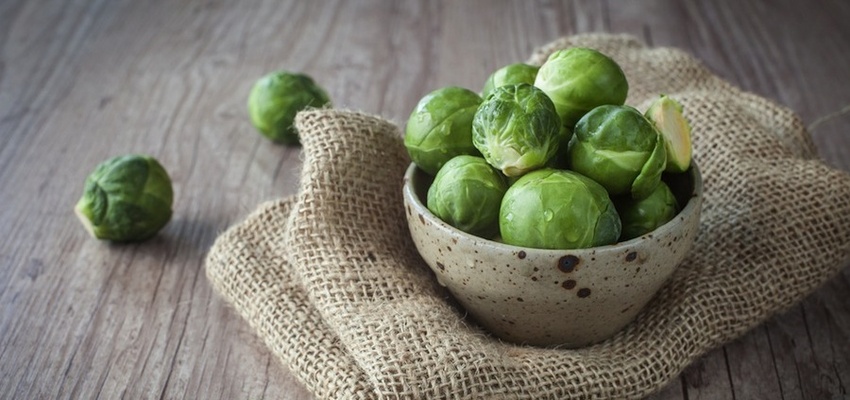The Simple Elimination Diet That Could Change Your Life Forever

But how do you know?
For many people, toxic foods are hard to spot, especially for those who've already cleaned up their diets and feel like they are eating healthy.
I actually recommend that everyone—yes everyone—do an elimination diet at least once.
So how do you do it and not make it complicated?
Here is my easy 7-step plan for doing your own elimination diet.
You might be surprised by what you learn!
1. Take stock.
It’s hard to know where you're going unless you know where you are.
Do you have skin issues?
Digestive issues like gas, bloating, or intermittent constipation?
Bad allergies?
How's your energy level?
What about your mood?
Ever feel like you suffer from brain fog?
These are just some potential symptoms of food sensitivities.
So, before you begin an elimination diet, start at your head and go to your toes, and make a list of everything you notice in your body, however subtle or long-standing the symptom has been.
This sets you up to notice important changes when they happen.
2. Eliminate the usual suspects for 23 days.
The basic elimination diet is as simple as this:
No gluten, dairy, eggs, soy, fast food, or alcohol for 23 days.
Why 23 Days?
Antibodies, which are the proteins that your immune system makes when it reacts to foods, take around 21 to 23 days to turn over, so if you don’t quit things to which you're sensitive for at least that time, you won’t get the full effect of eliminating them.
Why Booze?
Eliminating alcohol is partly for the detox factor. But alcohol also has a lot of sugar that helps things like yeast and harmful bacteria in your gut thrive. So when you eliminate alcohol, you may feel better in a few weeks, not just because of the absence of a sleep disruptor and a depressant in your life, but because you've actually changed the flora in your gut that are critical to keeping you healthy!
3. Cr*#! What DO I eat?
If this is your reaction, do not freak out! You can do this.
The diet requires a little grocery shopping and taking a few extra minutes a day to prepare food.
We’re all habituated to fast-food, easy prep, and taking two seconds to round up and scarf down a meal.
The problem is that typically food that can be prepared and consumed this way makes us sick over time.
New habits take 21 days to form, so the yogis say, which is also why we’re doing a 23-day elimination diet! We want these new habits to die hard.
4. But seriously .... what do I eat?
- 30% “clean” protein, i.e. organic, hormone-free, grass-fed, happy, lean beef, chicken, and wild fish and shellfish
- 70% vegetables, legumes (think beans and lentils), nuts, seeds, seaweeds, and gluten-free grains like quinoa
5. What to eat & what to avoid
DO ...
- DO eat fish. (But watch out for fish on the NRDC’s high mercury list like tuna and swordfish.)
- DO eat lots of fiber, fresh whole foods, and unprocessed meals you make yourself.
- DO eat lots of healthy fats found in olive oil, ghee, coconut oil, sunflower oil, flax oil, walnut oil, and avocados.
- Do NOT eat processed health bars if possible. They often have 15 grams (or more) of sugar. If you need them for an emergency snack, the kinds I like are Go Raw pumpkin bars and Kind’s “Nuts and Spices” variety, because they are very low in sugar.
- Do NOT carbo load on gluten-free breads, cereals and crackers. Totally cool to eat some of these, but in an ideal world, you’re not just replacing a lot of refined carbs with a lot of gluten free refined carbs.
6. How do I reintroduce foods the right way?
This is also much simpler than people make it out to be.
On day 24, pick one thing you eliminated—like gluten, OR dairy, OR eggs—but not more than one, and eat it.
See how you feel over the next 48 hours. If you have no reaction after two days, eat that same food again, and for a second time, notice how you feel. From there, it’s up to you whether or not to re-incorporate that food into your diet on a regular basis.
Once you’ve made a call on the first food you reintroduce, pick another one and follow the same steps.
7. This all works best when you pay attention to you.
Throughout the diet and the reintroduction process, notice how you feel.
Maybe you'll see changes you weren’t expecting.
Maybe your sleep quality or your energy level is better.
Maybe the redness in your skin is gone, or your belly is flatter.
No blood test can tell you what life without a particular food will be like.
When you find out for yourself, you could be saving yourself a lifetime of inflammation, annoying symptoms, and in some cases, even life-threatening diseases.
By Dr. Robin Berzin


Comentários